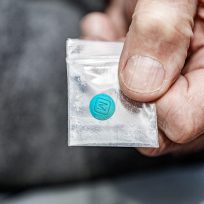A recent study tracked nearly 300,000 U.S. seniors and found that nearly 17% were still taking opioids six months after hip surgery. At three months after surgery, the figure was close to 70% and during the first month, 84% of patients were on opioids.
Researchers said the numbers suggest that older patients suffering with acute pain are not immune to the risk of opioid addiction.
Study lead author Dr. Kanu Okike said, “While the risk of long-term opioid dependence following musculoskeletal injury and surgery has been established in younger patient populations, our study found that this risk was present in elderly patients following hip fracture surgery as well.”
The study tracked hip surgery patients 60 years of age and older, with an average age of 82. All patients were surgically treated between 2009 and 2018 at one of 35 hospitals across the US. Roughly 70% were women.

What Are Opioids?
Opioids are a class of drugs naturally found in the opium poppy plant. They work in the brain to produce a variety of effects, including pain relief.
Opioids can be prescription medications (often referred to as painkillers), such as OxyContin, Vicodin, and fentanyl, or they can be illicit drugs, such as heroin.
Many prescription opioids are used to block pain signals between the brain and the body, effectively treating moderate to severe pain. Opioids can also induce relaxation, boost mood, and create an addictive “high.” Other side effects can include slowed breathing, nausea, confusion, constipation, and drowsiness.
When Are Opioids Dangerous?
Dr. Andrew Kolodny, medical director of Opioid Policy Research at Brandeis University’s Heller School for Social Policy and Management, says, “Taking opioids for five days is easily enough for physiological dependence to set in.” He cautions, “On day six, if you don’t take it, you may experience mild withdrawal symptoms like anxiety or insomnia, and that’s if the dose was low.”
Taking a low-dose opioid once or twice a month shouldn’t pose a problem but could actually increase the drug’s efficacy.

To eliminate the risk of opioid addiction, patients should stick to nonsteroidal anti-inflammatory drugs (NSAIDs) such as ibuprofen or naproxen sodium for effective pain relief without the dangerous side effects.
Risks For Seniors
Seniors are more likely to suffer adverse effects of opioids such as constipation or bone fractures if they’re treating pain caused by a fall.
Older adults experiencing back pain, undergoing surgical procedures, or dealing with other serious ailments might struggle to limit their use of opioids. There is a high possibility that they will end up integrating these pills into their daily regimen.
Some healthcare providers may not recognize or take seriously the risks of prescribing opioids to older people. Younger adults are stereotypically seen as more likely to engage in substance abuse. Doctors can also mistake early signs of a senior’s descent into drug misuse as anxiety or depression.
In the previous century, seniors often treated their physician as an all-knowing god. They rarely — if ever — questioned doctor’s orders. Today, the evidence pointing to the risks of opioid addiction is reason enough for polite pushback.







